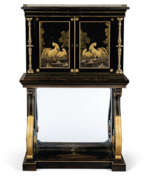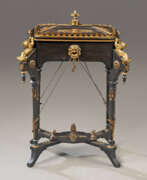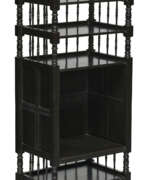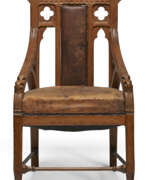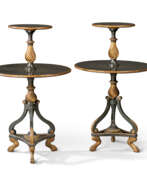Ebonising

Ebonising
Ebonised wood is a technique in which wood is stained or finished to resemble ebony, often used in furniture making. This method gained popularity in Europe, particularly in the 19th century, as ebony itself became increasingly scarce and expensive.
The process of ebonising typically involves applying a black stain or paint to wood, followed by a varnish or lacquer to achieve a glossy finish. This technique allowed artisans to create luxurious, dark wood furniture pieces without the high cost of actual ebony. Notable for its rich, black appearance, ebonised wood became synonymous with elegance and sophistication, frequently used in Victorian and Edwardian-era furniture.
Ebonised pieces are highly valued by collectors and are often found in museums and galleries. The Victoria and Albert Museum in London, for instance, houses several exquisite examples of ebonised furniture, showcasing the intricate craftsmanship and enduring appeal of this technique. Collectors and enthusiasts appreciate ebonised items for their historical significance and the skill required to produce them.
For those interested in the art and history of ebonised furniture, signing up for updates on new product sales and auction events can provide valuable insights and opportunities. Subscribe now to stay informed about the latest in ebonised art and antiques.
| Country: | Europe, France |
|---|---|
| Start of the period: | XVIII century |

